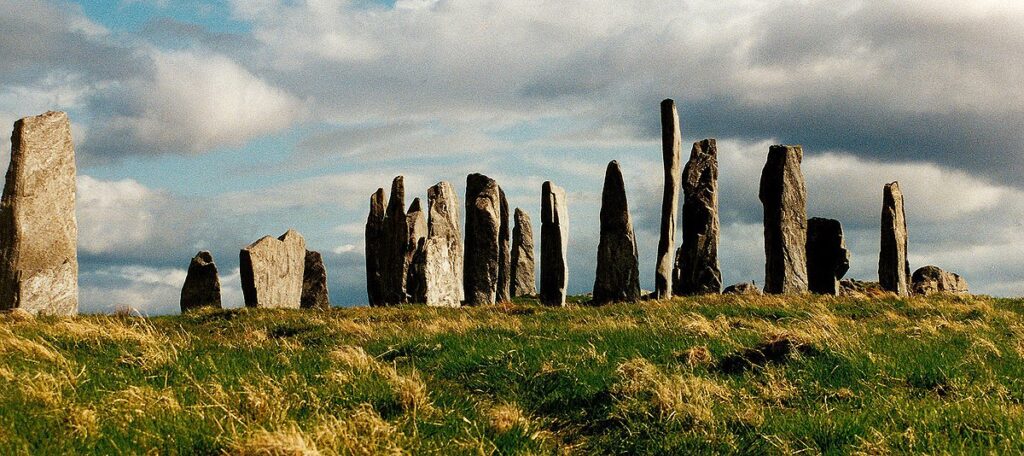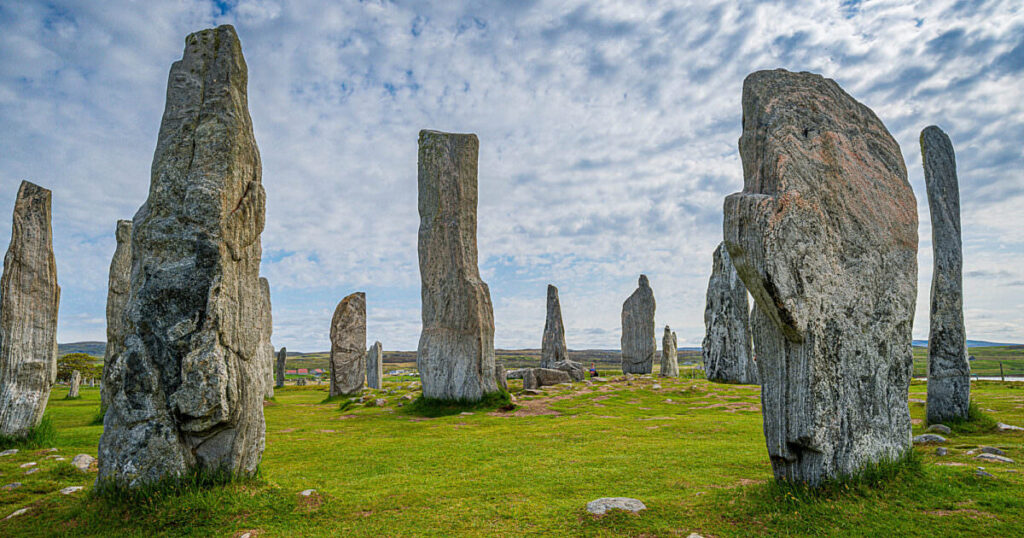THE CALLANISH STANDING STONES

The Callanish Standing Stones: Echoes of Ancient Connections
Nestled on the Isle of Lewis in the Outer Hebrides of Scotland, the Callanish Standing Stones stand as a testament to the enduring mysteries of ancient cultures. These remarkable monoliths, erected around 3000 BCE, capture the imagination not only for their imposing presence but also for the questions they raise about the societies that constructed them. Their alignment and architectural significance bear striking similarities to other ancient stone circles and megalithic sites across the globe, suggesting a shared heritage of human expression and astronomical observation.
An Overview of Callanish

The Callanish Standing Stones consist of a central circle of stones surrounded by a series of avenues leading to smaller stone structures. The largest stone, reaching nearly 5 meters in height, dominates the landscape, creating a striking visual that has drawn visitors for millennia. The arrangement of the stones suggests a deliberate design, possibly connected to celestial events, indicating a sophisticated understanding of astronomy among its builders.
Historical Context
Dating back to the Neolithic era, the Callanish stones were likely erected by a community with deep spiritual beliefs and a profound connection to their environment. Their purpose remains a subject of debate among archaeologists, but they are commonly thought to have served as a ritual site, a burial ground, or a place of astronomical observation.
Similarities with Other Ancient Sites
The Callanish Standing Stones are part of a wider network of megalithic structures found across the globe. Their features echo those of various ancient sites, highlighting commonalities in human thought and expression.
1. Astronomical Alignments
Many ancient stone circles, including Stonehenge in England, the Ring of Brodgar in Orkney, and the Nabta Playa in Egypt, exhibit precise alignments with celestial events. Callanish is no exception; the stones are believed to align with the rising and setting sun during solstices and equinoxes. This astronomical significance suggests that ancient cultures often constructed megalithic sites with a keen awareness of the cosmos, pointing to a shared human curiosity about the heavens.
2. Cultural and Ritualistic Purpose
Similar to the Callanish stones, other megalithic sites around the world, such as the Carnac Stones in Brittany, France, and the Goseck Circle in Germany, were likely used for communal rituals or ceremonies. The act of gathering at these sites for religious or social purposes speaks to the fundamental human need for connection, whether with the divine or with one another.
3. Megalithic Architecture
The construction techniques used at Callanish resemble those employed in other ancient cultures, such as the dolmens of Korea, the megaliths of Malta, and the pyramids of Mesoamerica. These structures demonstrate a sophisticated understanding of engineering and stonework, suggesting that communities across different regions independently developed similar techniques to create monumental architecture.
4. Myth and Legend
The Callanish stones are steeped in local folklore and mythology, much like other ancient sites. Stories of giants, ancient gods, and legendary events enrich the cultural narrative surrounding these structures, paralleling the myths associated with Stonehenge and other megalithic sites. Such narratives often serve to connect contemporary societies to their ancient predecessors, reinforcing cultural identity.
The Callanish Standing Stones are more than just a collection of ancient rocks; they are a powerful reminder of humanity’s shared heritage and our enduring quest for meaning in the cosmos. Their similarities to other megalithic sites around the world reveal a common thread of cultural expression, astronomical knowledge, and communal ritual that transcends time and geography.
As we continue to study these remarkable structures, we deepen our understanding of the societies that built them and the connections that unite us across cultures. The standing stones, resolute against the winds of time, invite us to listen to the whispers of our ancestors and explore the mysteries that still bind us together.
